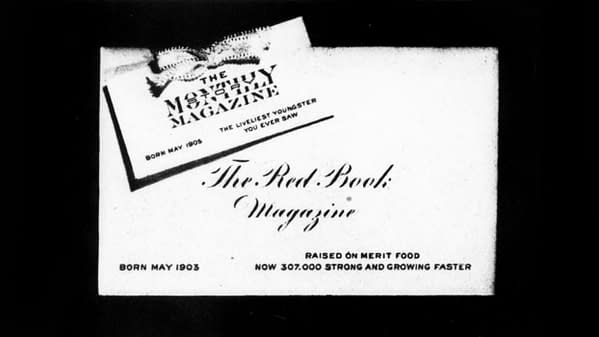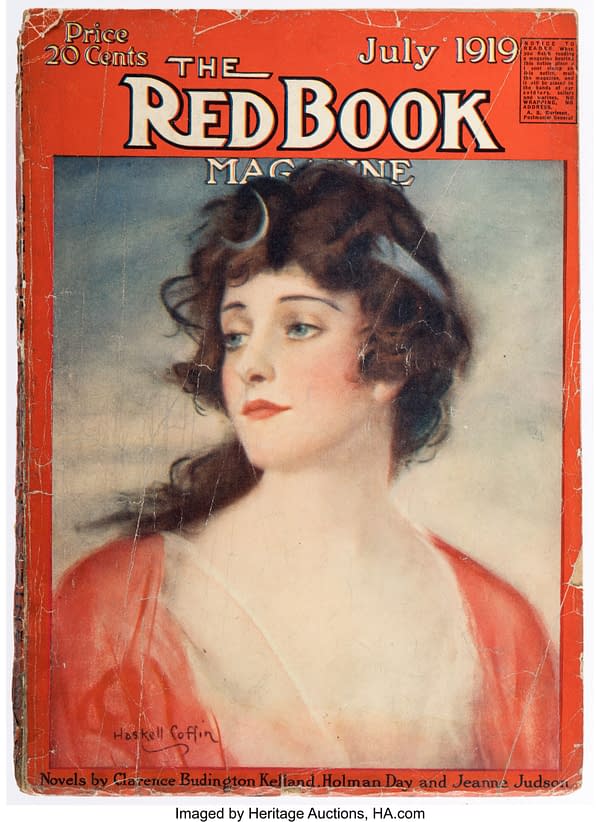Posted in : comic , Vintage Paper| tag : down in the mouth book , pulp , Red Book , spicy history narrative
Magazine and Pulp pioneer Louis Eckstein found important title Red Book and Blue Book and had an expansive career beyond the newsstand .
Article Summary
Blue Bookis considered a foundational early mush rubric with contributors that finally include the ilk ofEdgar Rice Burroughs , Zane Grey , Robert A. Heinlein , Agatha Christie , and countless others . Still involve as an important pulp serial by collectors and historiographer today , theBlue Booktitle was launched in 1905 by its publisher in the wake of the earlier success ofRed Book . As we discussed inour previous installmentabout the Daily Story Publishing Company , Red Bookitself had been launched specifically due to the success of that publisher’s10 Story Book . All of these maturation took plaza in Chicago in the late nineties and other 1900s , involving a number of business and paper figure of that city . By 1910 , the success ofRed Bookhad its publisherLouis Ecksteinbeing hailed as " the Munsey of the western theatre of operations " ( by which they have in mind he was based west of New York City ) by industry trade magazinePrinter ’s Ink . , a cite to foundational pulp publisherFrank Munsey , who had already achieved enceinte success in this era .
And with that , welcome back and it ’s fourth dimension forSpicy History Stories # 7 , the 7th installment ofa regular columnabout flesh magazine history that we ’ve launch to concur with Heritage Auction’sweekly pulp magazine auctions . Unlike other auction - centrical posts we ’ve done here , this column is not needs designed to be closely tie to any particular token up for auction sale . Mostly , it ’s this : if you enjoy the nerdy detail of risible book chronicle , you ’re going to bonk the astounding ( and yes , sometimes weird ) history of the hoi polloi and companies that made the pulps .
To recap what we learnedlast time , the sequence of events conduct toRed Bookand beyond started with the Chicago retail , restaurant , material estate , and chain armour order partnership of Stumer , Rosenthal & Eckstein , which provided financial patronage for the Daily Story Publishing Company . Daily Story was initially a syndicator of short tale for newspapers , but then launched the fable periodical10 Story Book . Stumer , Rosenthal & Eckstein disunite ways with Daily Story and its founderDwight Allyn , and decided to apply what they learned from the early months of10 Story Bookto plunge their own fiction magazine . On the advice ofChicago Daily Newsmanaging editorCharles M. Faye , they hire one of Faye ’s newspaper correspondentsTrumbull Whiteto be the editor in chief for this new magazine , which would be calledRed Book . The new magazine ’s power were in the Stumer , Rosenthal & Eckstein partnership - owned building at 158 - 165 State Street in Chicago .
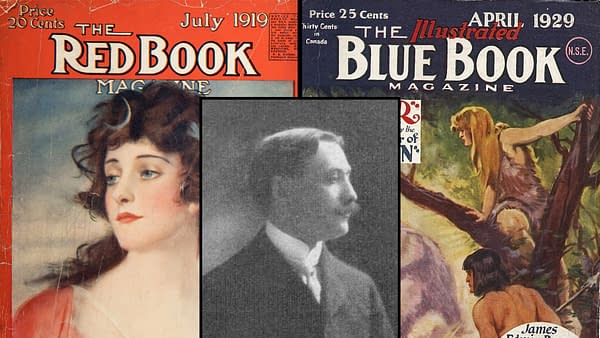
Rail Lines, Real Estate, and a Magnate of the Musical World
concord toHerbert Fleming’s1906 overviewof the Chicago publication conniption , Stumer , Rosenthal & Eckstein partnerLouis Ecksteinwas tapped as the head ofRed Book ’s original publishing entity Red Book Publishing Corporation , as it was finger he had the most first - hand cognition of the periodical publishing business among the pardner due to his anterior position of general passenger federal agent of the Wisconsin Central Railway , where he dealt regularly with publicizing in an enormous raiment of newsstand periodicals . Eckstein had alsodabbledinpublishingto promote travel on the Wisconsin Central lines , and in 1885 launched a monthly periodic calledWanderer , which has been describe as a Wisconsin Central in - sign publication for its employee ( and possibly customers ) , supported by advertising from its business better half .
Louis Eckstein ( 1865 - 1935 ) was born in Milwaukee , Wisconsin , the son of clothing merchantSamuel Ecksteinand his married woman Anna . According to one rootage , in his early day heaspired to be a concert violinist , but resolve he did not have the natural endowment for it . Eckstein ’s first chore was as a courier boy for the Wisconsin Central , and he work his path up from there at that railway system over the next several year . Eckstein , Louis M. Stumer , Abraham R. Stumer , andBenjamin J. Rosenthalformed a partnership in 1891 , launchingThe Emporiumin Chicago that yr and quickly blow up into other businesses .
As with the rest of the partners , Eckstein was involved in a dizzying array of business organisation interests , in his pillowcase prominently touch to a major Bos taurus railcar company , existent demesne , and restaurants , among his other endeavors . During his lifetime , he was best known for his hearty involvement in what is now known as theRavinia Festival . In 1911 , Eckstein and others acted to save the 36 - acre Ravinia situation from the bankruptcy of its previous owner , as Eckstein guided it into including opera house performances . Ravinia set out in 1904 as a sort of tourist attraction , including amusic pavilion , theater of operations , casino , and athletic fieldinitially make by the Chicago & Milwaukee Electric Railroad . About his involvement in Ravinia and especially its now - famous musical component , one 1925 profilethat also note his tendency to avoid publicity would say , " One of the most enterprising and least bonk of the tycoon of the musical earthly concern is Louis Eckstein , director of the Ravinia Opera Company . Few operatic directors exert so independent or discharge a sway over their organizations ; few showman are so much creditworthy personally for the success of their season , and few operatic chiefs are so absolutely removed from public examination as Mr. Eckstein . The Ravinia Opera is the project of an person who stands responsible for it because of his own pleasure in maintaining an opera house company . "
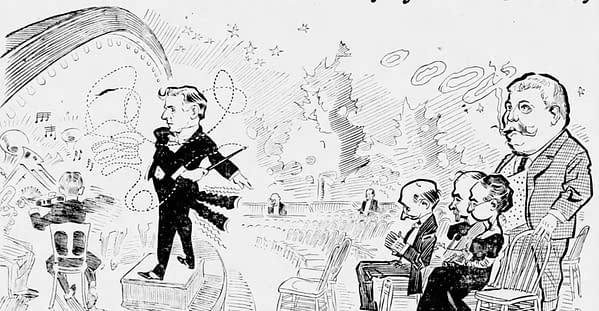
Putting the Red in Red Book
WhenRed Bookdebuted in 1903 , literary magazines with colors in their names had been a drift over the anterior decade . This started most magnificently with London’sYellow Book , followed speedily by the equally influentialBlack Catin America , and soon came to include the ilk ofGray GooseandFrank Tousey’sWhite Elephant . allot to an editorial in its first appearance issue , the colour red was pick out here to ruminate the nature of the magazine ’s contents . " Red is the color of sunshine , of brightness , of gayety . It is the most brilliant color in the spectrum , and the one which is chosen — so scientists distinguish us — as the most beautiful , by four out of five individual . It is the colouring of the most smart as a whip displays in nature , from sundown to fall foliage . Therefore , The Red Book . "
There is some confusion among pulp histories as to the original nature ofRed Book , due to its much late incarnation as a women ’s magazine . ButRed Booklaunched as a general audience fabrication - focused mag that also conspicuously included " photographic art field of study " of beautiful women . This photograph feature was key to the clip ’s early achiever . While the photo are not nearly as shocking as present-day descriptions of this steady photo feature made them fathom , they did bring up eyebrow , withGeorge Bernard Shawreportedly expect if there were any Chicago cartridge that featured photos of beautiful serviceman , when the magazine require if he would write 12 articles forRed Book ’s first year . Shaw turn down the offer .
Eckstein probably stick the idea for this photo feature from Western News Co. ‘sElias A. Shepler . According to Fleming ’s account : " First the publishing firm prepared a small preliminary variation , of which only twenty copies were nail and taken to theRed Bookoffice . They were never circularise . This preliminary turn check only a meager collection of stories and no photographic illustrations . A sample transcript was take to Mr. Shepler , the Western News Co. managing director , experienced in seeing Chicago publications die on the news - stands . Mr. Shepler told the publishers that , as it then appeared , their book was no better than any of the many ten - penny story magazines , and therefore it would not go . They stopped the reaper binder . They enlarged the magazine , and sum up an illustration feature film . The illustrations of the stories in the experimental figure , as in the first six steady issues , were zinc etchings which attend cheap . For this reason some half - tone feature of speech was peculiarly desired . In the blown-up initial number a serial publication of exposure in a ' photogaphic art ' section filling the first Page of the book was sneak in . "
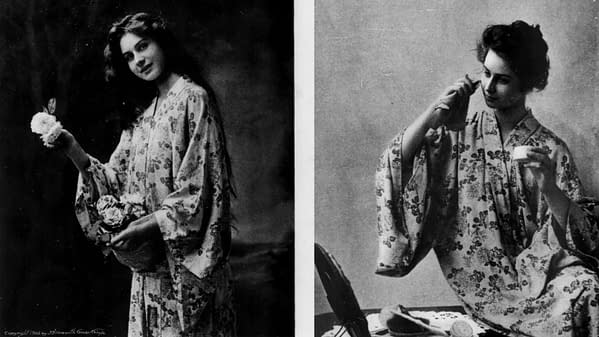
Beyond this sort of conniving market research , Eckstein showed the same resourcefulness in selling and solicit feedback . PerPrinter ’s Inkin 1910 : " Each month advertisers and agent all over the United States receive a specialRed Bookbox , containing a transcript of the clip itself and a liberal photogravure of an actress . In the beginning this monthly box go out with a copy of theRed Bookand a miniature set of ten - personal identification number , used to emphasize some ad lesson . Next month some other trinket was sent to make a point , and the following month something else , until , by a process of learning the requirement , it was discovered that everybody like handsome characterisation of pop actresses , and these were adopted as a staple memento . Mounted , quick for hanging , they are not only yield place in post and base , but communicate something of theRed Book ’s grapheme . "
Cheap Paper and the Theater
Eckstein and his partners were uncoerced to absorb important costs to makeRed Booka success . Printer ’s Inkwould by and by quote a figure of $ 1 million in expenses , including printer ' invoice and top pace bear out to contributors before the tide turned and the form of address became profitable . But the tide did turn , andRed Book ’s success quickly spawn imitator , most notably Street & Smith’sSmith ’s Magazine . Eckstein soon followed up on his own success withBlue Bookin 1905 , which was launch under the initial titleMonthly Story Magazineusing unused and/or unsuitable tale contributions fromRed Book . And unlikeRed Book , Blue Bookused " the tacky kind of paper " but featured a gamey page counting . Green Book(initiallyGreen Book Album ) followed in 1909 , boast photos and coverage of theater worker and novelizations of plays .
While not accomplish quite the historic reputation thatBlue Bookwould , Red Bookwould come to include fable from Edgar Rice Burroughs , Booth Tarkington , andF. Scott Fitzgerald , among others . In 1929 , magazine publisher McCalls Co. acquired control of Consolidated Magazine Corp ( the corporate eggshell that ownedRed BookandBlue Bookat this clip ) . As report byTime Magazine , Eckstein received 25,603 shares of McCall gillyflower measure at over $ 2 million in the deal . Louis Eckstein died on November 22 , 1935 at his apartment in the Drake Hotel in Chicago . He had continued to go after his heat for music late in life , becoming a theater director of New York ’s Metropolitan Opera Company in addition to his stewardship of Ravinia .
enjoy this ? Please share on social culture medium !
